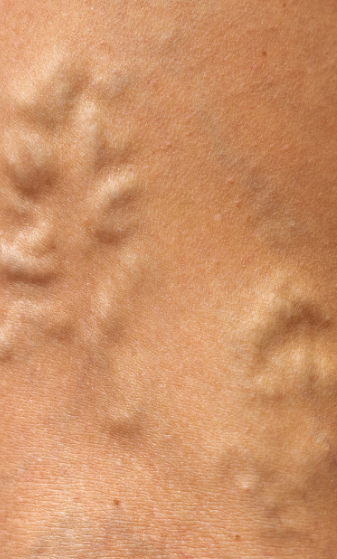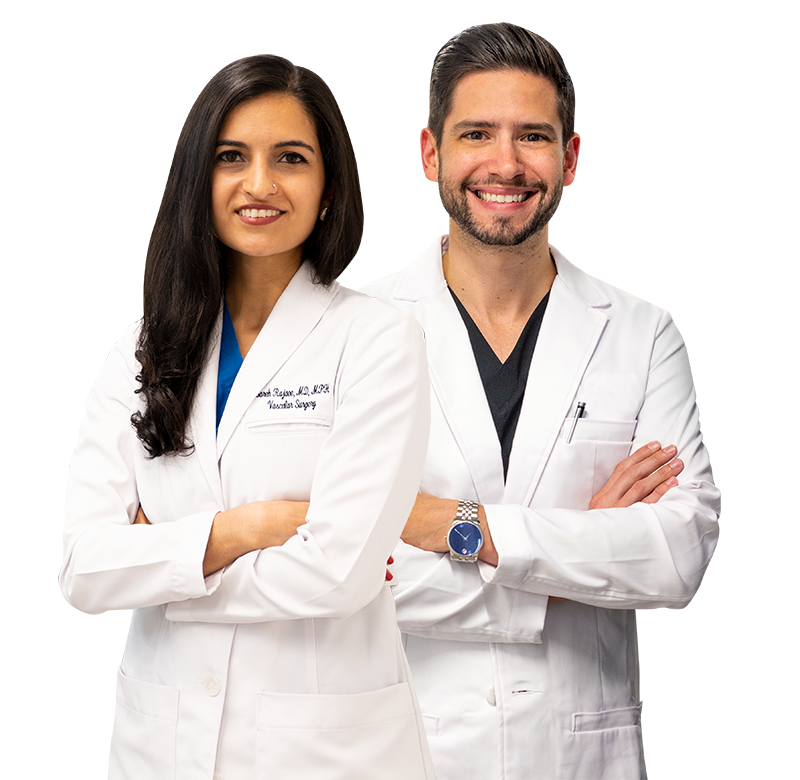When to See a Vascular Doctor? Signs You Need to See a Vein Doctor, Explained
When to see a vascular doctor?
Chronic venous insufficiency is a circulatory disorder wherein your vein valves collapse or malfunction. In healthy veins, the valves act as one-way doors to ensure smooth blood circulation towards the heart against the force of gravity. When your vein valves collapse, blood flows backward due to gravity and accumulates in the leg veins, leading to excessive vascular dilation. The continued accumulation of blood in leg veins also leads to spider veins, varicose veins, and numerous other vein conditions, some of which are mild enough that they’re misattributed to exhaustion or aging.
Below, we discuss the symptoms indicating it’s time to see a vein specialist in California.
Leg heaviness is one of the first warning signs of abnormal veins or venous insufficiency. The accumulation of blood in leg veins can lead to heavy legs, especially at the end of the day. You can also experience leg heaviness because of numerous other factors, but it’s most likely caused by vein disease if the symptoms worsen at night.
2. Frequent Leg Cramps
Leg cramps are involuntary muscular contractions that originate in the legs and spread to other parts of the body. Everyone experiences leg cramps occasionally due to mineral deficiencies, muscle exhaustion, or other factors. However, if you experience frequent leg cramps, especially at the end of the day, you may have chronic venous insufficiency.
3. Restless Leg Syndrome
Restless leg syndrome is a condition wherein you have an insatiable urge to move or shake your legs, leading to exhaustion, insomnia, and an inability to function optimally. This can also be caused by numerous factors, but it’s most likely caused by venous insufficiency if the symptoms worsen at night.
4. Leg Swelling
Leg swelling is a common symptom of chronic venous insufficiency. The accumulation of blood in leg veins also leads to fluid accumulation (edema) in the tissues on your calves, ankles, and lower legs. This can lead to leg swelling, especially at the end of the day or after long periods of inactivity.
5. Spider Veins
Spider veins are dense clusters of reddish or bluish blood vessels visible just underneath the skin’s surface. They look like a dense mass of spider webs crawling on your skin, leading to feelings of self-consciousness and social anxiety. Spider veins are abnormal veins caused by chronic venous insufficiency.
6. Varicose Veins
Varicose veins are large blood vessels that protrude out of the skin’s surface in a tangled, twisted, and knotted form. They can be reddish, bluish, purplish, or greenish, and they usually appear on the lower extremities of the body, such as the thighs and buttocks. Varicose veins are also caused by chronic venous insufficiency.
7. Skin Discoloration
Skin discoloration is one of the advanced complications of untreated vein disease. Venous insufficiency occurs when your vein valves are damaged, and blood accumulates in the leg veins, thereby interrupting optimal blood circulation. The lack of proper blood circulation makes your legs look pale and colorless.
8. Leg Ulcers
Leg ulcers are non-healing wounds on your skin’s surface, and they’re advanced complications of chronic venous insufficiency. The lack of blood circulation in your leg veins prevents your wounds from healing completely, leading to ulceration.
9. Deep Vein Thrombosis
Deep vein thrombosis is one of the most dangerous complications of chronic venous insufficiency. The accumulated blood in your leg veins may clot and eventually break away. When that happens, the blood clots can travel to the lungs, leading to a potentially fatal condition known as pulmonary embolism.
Why would you see a vascular doctor?

What happens at the first vascular appointment?
What does a vascular test consist of?
If you have the signs and symptoms of chronic venous insufficiency or abnormal veins, please schedule an appointment at our center for vein treatment in CA.
CA Vein Doctors
Meet our team of California Vein Treatment Specialists
